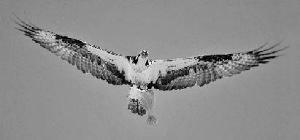25 years of consevation (and birding)
Ask Steve Ellis to name his favorite Whidbey bird and him lips are sealed.
“That’s like asking a parent of many children which was their favorite,” he said.
But Ellis admits it is birds like the common yellowthroat, a tiny bird that flies up from Central Mexico each year, that garners his admiration.
“It’s amazing to think how far they fly, and how they have to claim their territory, find a mate and get back, all before winter,” he said.
Ellis is just one of more than 170 members of Whidbey Audubon who will celebrate the chapter’s 25th anniversary the evening of April 10 at the Coupeville Recreation Hall.
While Audubon’s link to birding comes to mind most frequently, the National Audubon Society — of which the Whidbey chapter is affiliated — is a nonprofit environmental organization dedicated to conservation. Founded in 1905, it is one of the oldest organizations of its kind, named in honor of John James Audubon, an ornithologist and naturalist who painted, catalogued and described the birds of North America.
The Audubon Christmas bird count held each year is one of the leading examples of citizen science in the world, and a keystone of the group’s mission.
“I may never be able to do quantum physics,” said Ellis, “but everyone can help count birds.”
Most of its members are avid birders, often keeping an eagle eye out to scope local feathered species of cormorants, owls, sparrows, hummingbirds, finches, and yes, eagles, too. But they are also civilian scientists, preservation conscious, environmentally aware, and preservation minded.
“I’ve always had an interest in nature,” Ellis said.
Ellis was the longtime leader of the Whidbey Audubon’s annual Christmas bird count. He, along with his wife, Martha, will share some “wings and tales” of the chapter’s history during the 25th birthday event.
For Ellis, it was his childhood love for fishing and upbringing in Anchorage, Alaska, that brought him to Audubon.
“I realized when I was a kid that the fish ate bugs and that other animals ate bugs and I began to see the whole environmental picture,” he said.
When Ellis met his future bride, it was their courtship walking along Whidbey’s trails that peeked a curiosity in both for local birds and wildlife.
“I wanted to learn more, so I tagged along on an Audubon field trip with people I figured knew a whole lot more about birds than I did,” he said.
A decade later, and now Steve and Martha Ellis are among the enthusiasts leading the popular birding fieldtrips.
“People need to recognize that unless we preserve habitat there will be no more birds to enjoy,” said Cheryl Bradkin, who, along with her husband, Bill, also lead field trips.
Ask them where to find birds on Whidbey, and the Bradkins, like other birders, are happy to share.
“It’s not like fishing where people keep their favorite spot secret,” Ellis said.
Some of those favorite places for feathered friends on Whidbey is Crockett Lake, Fort Ebey State Park, Deception Pass State Park and Keystone Spit.
In addition to the fieldtrips, programs and events at all levels of the Audubon Society are heavily linked to education — whether a class or workshop or lobbying efforts for local wildlife.
“Important issues we address range from invasive birds to wetlands conservation,” Cheryl Bradkin said.
Whidbey Audubon members often pair with other island environmental groups such as the WSU Beach Watchers to help educate everyone from local elementary students to legislators.
“I see more local involvement in environmental issues,” Ellis said, “and people taking better care of their piece of the island.”
Local chapter members continue to be active in discussion on the preservation of the Swan Lake watershed, and the proposed development in the area.
“We don’t endorse candidates, we support issues that affect the voiceless, the wetlands and birds,” Ellis said.
Ellis sees the future as nothing but sky-high for Whidbey Audubon and its birders.
“Birding is an activity that people stick with for a lifetime,” he said. “The torch will continue to be passed.”
The Audubon’s local conservation efforts will also continue to thrive thanks to the efforts and enthusiasm of members such as Robin Llewellyn.
“This is my opportunity to give back to the community,” Llewellyn said. “It’s what you do if you have something you treasure.”


